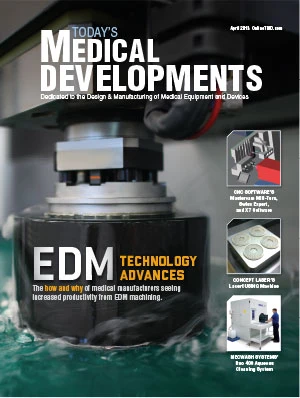 Tom Grasson Tom GrassonAssociate Publisher Editorial Director |
Anyone familiar with today’s economic drivers would agree that a strong manufacturing base is the right prescription to cure an ailing economy, and justifiably so. The fact is the manufacturing sector continues to be the mainstay of our economic productivity. If you don’t believe this, just consider that in 2011 this sector produced $1.8 trillion in GDP, which equates to 12.2% of the total U.S. GDP. Furthermore, the manufacturing multiplier is greater than the multiplier of any other major economic activity, generating $1.35 in additional economic activity for every $1.00 spent in manufacturing. Seeing the potential of the manufacturing sector, the current administration jumped on the bandwagon last year, using the “We Can’t Wait” initiative to announce plans to invest $1 billion to create a national network of up to 15 manufacturing innovation institutes around the country. Known as the National Network of Manufacturing Innovation (NNMI), the 15 institutes will serve as regional hubs of manufacturing excellence to make our manufacturers more competitive and encourage investment in the United States. On the surface, one might think this is just what the doctor ordered. But in reality, it could also be viewed as more unnecessary government spending and another waste of taxpayer’s money. Now, I’m not saying that this government initiative is a bad thing. However, I believe it will take a minimum of five years to see any benefits from this endeavor. For manufacturing to pump-up this flat economy in the short-term, a couple of things need to happen. First, the current tax code must be revised. The corporate tax rate is a major deterrent in becoming a competitive player in the global market. It is estimated that 70% of manufacturers pay income taxes at individual rates. This means any tax increases on individuals is also a tax increase on manufacturers, which at best is job limiting. A 35% corporate tax rate is unacceptable when we are competing against countries boasting much lower tax rates. We also need to make the R&D tax credit permanent. Currently, Congress must renew it annually, which results in manufacturers being reluctant to make long-term planning decisions. The second thing that must happen, which some may say is even more important than the tax issues, is the restoration of trust and confidence in our government. It is alarming when a recent Pew Research Center poll finds 53% of Americans feel that the federal government threatens personal rights and freedoms. Just as alarming is a Gallup poll conducted late last year that found 49% of Americans believe the federal government has become so large and powerful that it poses an immediate threat to the rights and freedoms of ordinary citizens. Interestingly, in 2003, less than 30% believed this. Changing these perceptions is where a “We Can’t Wait” initiative would be most successful. Perhaps you agree with these comments. Perhaps, you might see things entirely different. Whatever the case may be, I would like to pose a question to you. If you owned a manufacturing business today, would you have enough trust and confidence in our government to make major investments in this business, hire additional people, and continue putting money into R&D? Your comments would be greatly appreciated.
|

Explore the April 2013 Issue
Check out more from this issue and find your next story to read.
Latest from Today's Medical Developments
- Arcline to sell Medical Manufacturing Technologies to Perimeter Solutions
- Decline in German machine tool orders bottoming out
- Analysis, trends, and forecasts for the future of additive manufacturing
- BlueForge Alliance Webinar Series Part III: Integrate Nationally, Catalyze Locally
- Robot orders accelerate in Q3
- Pro Shrink TubeChiller makes shrink-fit tool holding safer, easier
- Revolutionizing biocompatibility: The role of amnion in next-generation medical devices
- #56 Lunch + Learn Podcast with Techman Robot + AMET Inc.






